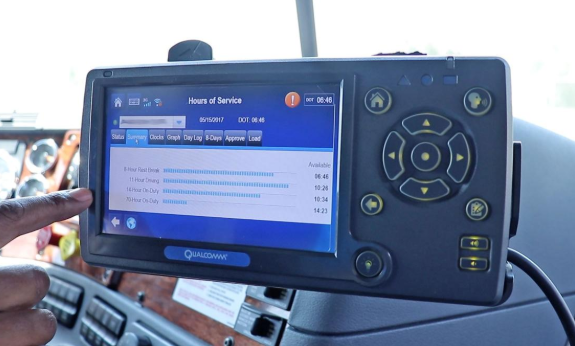Transflo Offers Tips for the AOBRD-to-ELD Transition

As the deadline for full ELD compliance nears, it’s important to make sure you’re using a device that meets all the requirements
Transflo
Offers Tips for the AOBRD-to-ELD Transition
Starting Tuesday, Dec. 17, 2019, only Electronic Logging Devices
(ELDs) that are registered with the U.S. Federal Motor Carrier Safety
Administration can be used for records of driver duty status. Automatic
Onboard Recording Devices (AOBRD) will no longer be allowed.
“Unlike paper and electronic logs, the differences between compliant ELDs and
other onboard recorders aren’t necessarily apparent,” says Doug Schrier,
Vice President of Product and Innovation at Transflo, the leading provider
of ELDs and mobile business-management technology to the transportation
industry. “As the deadline for full ELD compliance nears, it’s important
to make sure you’re using a device that meets all the requirements.”
Transflo offers the following tips to help fleets and drivers comply
with ELD-related inspections at the roadside:
1. Check the FMCSA’s list of registered ELDs
The FMCSA does not endorse specific ELDs. However, the agency maintains a list
of self-certified and registered devices here: csa.fmcsa.dot.gov/ELD/List. Search
and make sure your ELD is on it, including the device name, model number,
and important details like data transfer methods, where to download the
user manual, and the ELD supplier’s certifying statement. The Transflo ELD
is a fully integrated and connected telematics solution that is
self-certified and on FMCSA’s list of registered ELDs.
2. Don’t expect soft enforcement
The Commercial Vehicle Safety Alliance confirmed that there will
be no period of “soft enforcement” after Dec. 16, when the
two-year grace period to transition from AOBRDs to ELDs ends. Expect officers
to look closely at whether your logging device complies with federal
requirements for ELDs.
3. If you’re a last-minute ELD shopper, look for more than hardware
For the thousands of truckers who have not yet upgraded to ELDs from AOBRDs,
technical support and training are more important than ever. “Choose an
ELD vendor that will make sure your installation and telematics
connections are working properly, and has resources to help you train
drivers and other personnel,” Schrier says. “There are dozens of ELDs on
the FMCSA’s list of registered devices and they all have to produce the
same basic set of data. The difference among vendors is in service,
support, and your ability to use that data to run your business.”
As the leader in enterprise mobility and workday management technology for the
trucking industry, Transflo is uniquely positioned to help fleets and
drivers leverage ELDs to streamline the way they manage scheduling,
documentation, compliance, and other business processes.
4. Make sure your drivers are ready at the roadside
Prepare your drivers for added scrutiny at the roadside. Remind them that by
rule, an ELD must be designed so that a safety official can read the
display without having to enter the vehicle. If the ELD uses a mobile
device, the driver doesn’t have to hand it to the inspector; he can handle
it on the inspector’s behalf as long as the display is visible.
Drivers
should also have access to paper logs as a backup to their ELD, and know
where to find clear instructions about how to enter, retrieve, and
transfer data. With the Transflo ELD, these documents are available in
electronic format within the Transflo Mobile+ app (under “Required Documents”).
Category: Connected Fleet News, Driver Stuff, Featured, Fleet Tracking, General Update, News, Safety, Tech Talk










